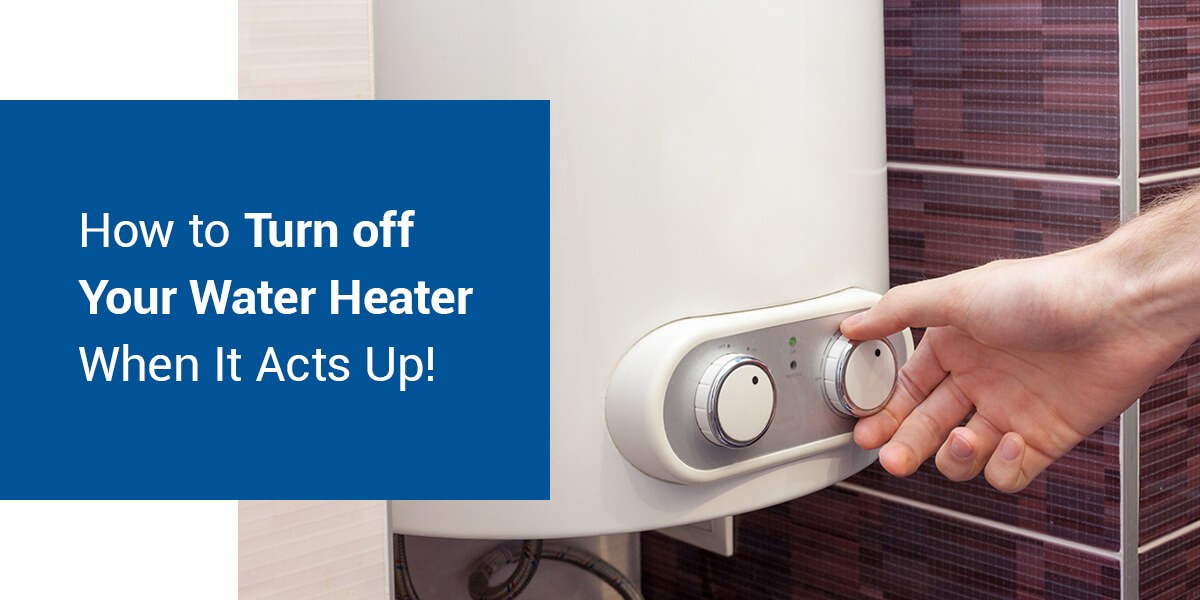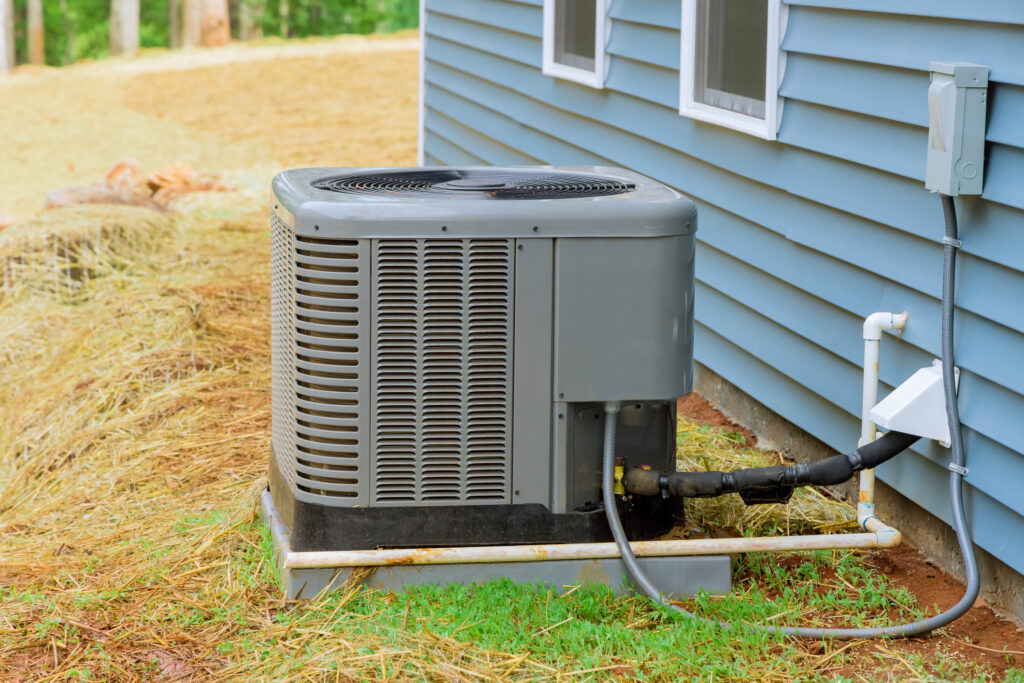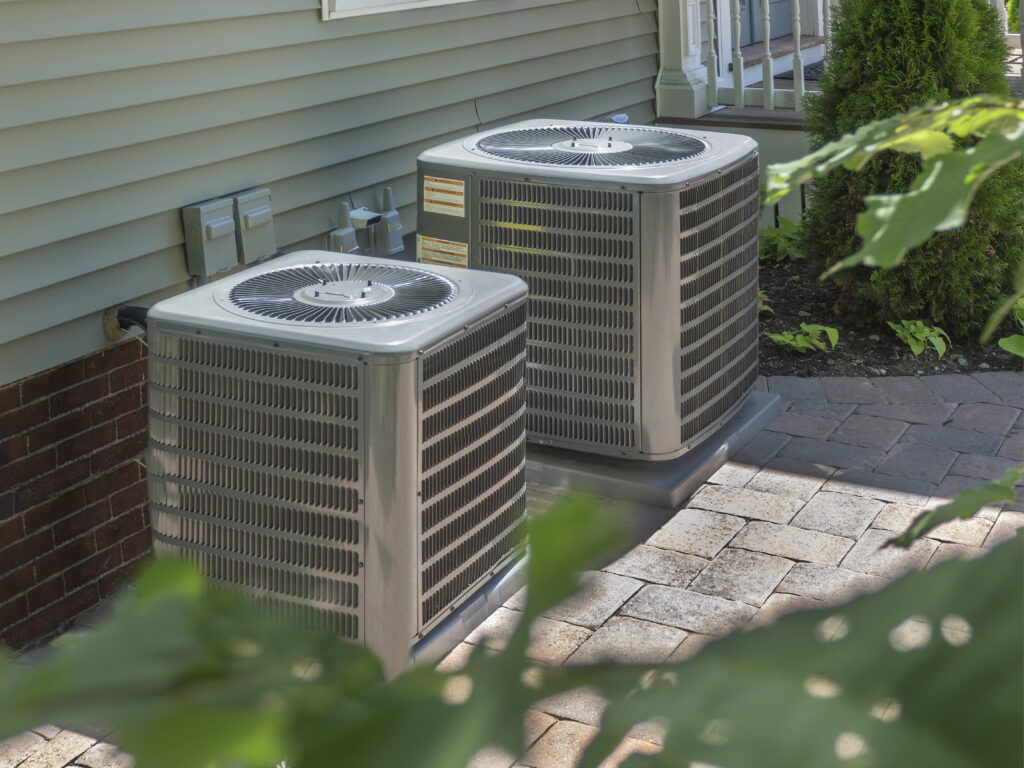
With so much happening in our everyday routines, one of the last things we think about is our water heaters, but when it starts acting up, we have questions. When your digital alarm sounds or you suspect issues with your water heater, you’ll want to know how to address them promptly. Before you call a plumber, you can do a few things to prevent a gas or water leak and get your water heater back in working condition.
Whether your pilot light goes off or you notice water pooling around your tank, the best thing to do is turn it off safely to avoid extensive damage. We’ll list a few signs you can look out for that might indicate you should turn off your water heater and how you can do that.
Signs That You Need to Turn off Your Water Heater
If you ever notice your water heater isn’t performing as it should, it is critical that you do not allow the heater to continue running.
Warning signs that indicate it’s time to turn off your gas or electric hot water heater can include:
- There are weird sounds coming from your heater
- The unit is overheating
- Your heater isn’t performing as it should
- You smell gas anywhere in the house
- Your pilot light goes off
- Your alarm goes off
- You notice water leaking or pooling around the bottom of your tank
The longer a water heater runs with one of these symptoms, the more severe the problem can become. This could leave you with leakage, flooding or worse. Even if someone is coming out to work on the water heater, it is still better if you turn off the heater before they arrive.
How to Turn off Your Gas or Electric Water Heater
While some may not realize it, you can turn off your gas or electric water heater in just a few easy steps. First, you’ll want to locate your water heater when you suspect something’s off. Most water heaters are in utility closets, garages, basements or attics. Whether your home has a gas or electric water heater, you can shut it off by following these steps:

1. Turn off the Gas or Electricity
If you’re unsure whether you have a gas or electric heater, examine it closely — an electric heater will usually have an AC power cable on top, while a gas heater typically has a wide vent pipe.
If you have a gas water heater, go to your thermostat — usually located on the bottom of the tank — and switch the black or red dial at the top from “on” to “off.” Turning off the heater will stop the pilot and keep the burner from heating.
You should also turn off the gas line valve. Locate the valve on the gas line close to the heater and turn the lever so it’s perpendicular to the gas line. If you don’t see a valve, follow the gas line until you reach a handle, which serves as the switch. If you can’t locate the gas line valve, contact your local plumber for help.
If you have an electric water heater, you’ll need to turn off the hot water heater circuit breaker, typically located on an exterior wall or in your garage or basement. After finding the breaker box, switch your electric water heater from “on” to “off.”
2. Shut off the Water Supply
Next, you’ll need to locate the plumbing line, usually at the top of the water heater. Twist the handle atop the water valve clockwise. Unless the water comes to a complete stop, locate the main water valve for your house — usually in a basement, garage or utility closet — and turn it off to cut off the water supply.
3. Drain the Water Heater
To avoid water damage to your home, you’ll need to drain your water heater. At the bottom of the tank, connect one end of a garden hose to the drain valve and place the other end in a safe spot to drain the hot and rusty water from your tank. Then twist the drain faucet counter-clockwise to release the water supply. Leave the valve open so all the water can escape, then close the drain.
4. Open the Relief Valve
Find the pressure relief valve toward the top of your tank and flip the handle so it’s sticking straight out or up before gently releasing it. This will allow air to enter the tank so it drains properly. You can also achieve the same effect by turning on any hot water faucet in your home.
How to Turn on Your Water Heater
If your water heater doesn’t need a repair or replacement, you should be able to get it back on and running yourself.
To turn your gas water heater on, follow these steps:
- Ensure all gas has dissipated by leaving your gas valve off and waiting for at least five minutes.
- If any of your gas valves or faucets connected to your heater were bumped open or kept on, turn these off.
- Turn on your cold water supply to fill the tank.
- Relight the pilot depending on the specific model of the heater you have. If you smell gas at any moment, stop what you’re doing and call a professional.
To turn your electric water heater on, you’ll need to:
- Ensure the breaker controlling your water heater is switched off.
- Close any open valves or faucets connected to your heater.
- Turn on the cold water to allow your hot water tank to fill.
- Turn your breaker back on once the tank is full by switching it from the “off” to the “on” position.
Whether you have a gas or electric heater, you’ll typically need to wait at least an hour for your water to heat.

Trust Tom Drexler Plumbing, Air & Electric for Your Water Heater Needs
Learning how to turn off your water heater can help you deal with any unexpected issues and prevent severe damage to your home. And when your water heater requires maintenance, it’s essential to leave the work to experts to get the job done right.
The professionals at Tom Drexler Plumbing, Air & Electric are excited to provide you with outstanding services and answer any questions you may have. We’re proud to say that we’ve been providing plumbing installation, repairs and maintenance since 1982. Whether you need your water heater looked at or any other home service, we are your premier company.
For plumbing maintenance, request service online or call (502) 456-5982 today!







